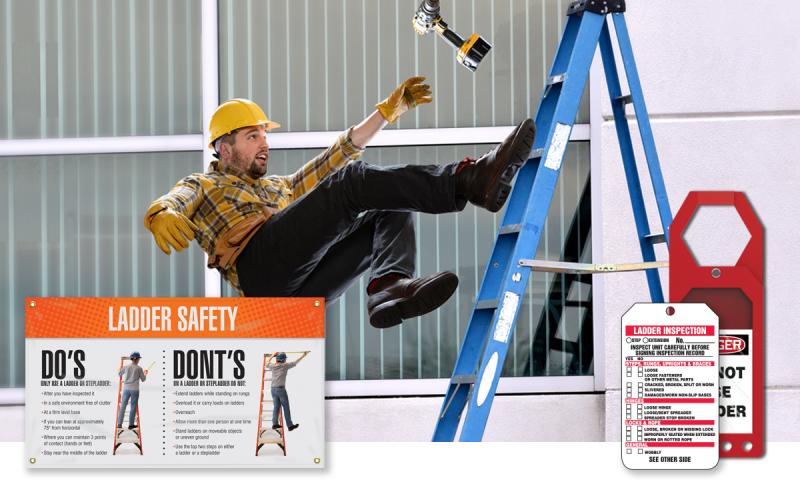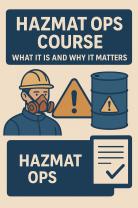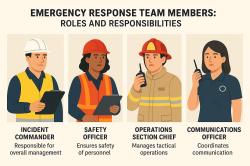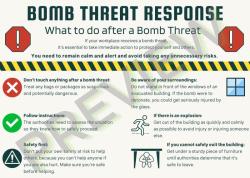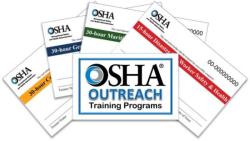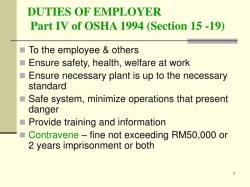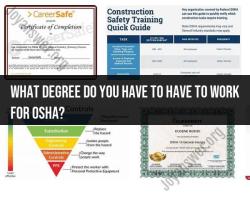What is OSHA and which jobs does it protect?
The Occupational Safety and Health Administration (OSHA) is a federal agency within the United States Department of Labor. OSHA was created by the Occupational Safety and Health Act of 1970 to ensure safe and healthy working conditions for employees across the country. The primary goals of OSHA are to:
Set and Enforce Standards:
- OSHA establishes and enforces safety and health standards to protect workers in various industries. These standards cover a wide range of hazards, including but not limited to, chemical exposures, machinery safety, electrical hazards, and more.
Provide Training and Outreach:
- OSHA provides training, educational resources, and outreach programs to employers and employees. This helps ensure that workers are aware of their rights, understand workplace hazards, and are trained on proper safety procedures.
Conduct Inspections and Investigations:
- OSHA conducts inspections and investigations to ensure that employers are complying with safety regulations. Inspections may be scheduled or unannounced, and OSHA has the authority to issue citations and penalties for violations.
Promote Whistleblower Protection:
- OSHA protects employees who report safety violations or express concerns about unsafe conditions in the workplace. Whistleblower protections ensure that employees can voice their concerns without fear of retaliation.
Collaborate with Employers and Labor Groups:
- OSHA collaborates with employers, labor groups, and other stakeholders to develop and revise safety and health standards. This collaborative approach helps ensure that regulations are practical and effective.
Maintain Recordkeeping:
- Employers are required to maintain records of work-related injuries and illnesses. OSHA uses this data to identify trends, assess workplace hazards, and develop strategies to improve occupational safety.
Emergency Response Planning:
- OSHA requires employers to have emergency response plans in place, addressing issues such as evacuation procedures, first aid, and dealing with potential workplace emergencies like fires or chemical spills.
Address Hazard Communication:
- OSHA's Hazard Communication Standard ensures that employees have information about hazardous chemicals they may be exposed to in the workplace. This includes proper labeling, safety data sheets, and training on chemical hazards.
Focus on Specific Industries and Hazards:
- OSHA addresses the needs of various industries and specific hazards, including construction, general industry, maritime, agriculture, and more. Regulations are tailored to the unique challenges of each sector.
Jobs that OSHA protects include those in a wide range of industries, encompassing:
- Construction: Construction workers, contractors, and supervisors.
- Manufacturing: Factory workers, machine operators, maintenance technicians.
- Healthcare: Nurses, doctors, healthcare assistants, maintenance staff.
- Transportation: Truck drivers, mechanics, transportation workers.
- Agriculture: Farmers, agricultural workers, pesticide applicators.
- Oil and Gas: Oil rig workers, drillers, refinery workers, pipeline operators.
- Mining: Miners, drillers, equipment operators.
- Emergency Services: Firefighters, paramedics, emergency medical technicians.
- Telecommunications: Telecommunications tower climbers, technicians.
- Warehousing and Logistics: Warehouse workers, forklift operators, logistics personnel.
It's important to note that virtually all employers in the United States fall under OSHA's jurisdiction, with some exceptions such as self-employed individuals and certain small businesses. OSHA's regulations aim to create a safe and healthy working environment for employees in diverse occupations and industries.
What is OSHA, and which employment sectors does it safeguard?
What is OSHA?
OSHA stands for the Occupational Safety and Health Administration. It's a government agency within the U.S. Department of Labor responsible for ensuring safe and healthy working conditions for all employees in the United States.
Here are some key points about OSHA:
- Mission: To protect workers from hazards at work and promote safe and healthy workplaces through setting standards, enforcing those standards, providing training, and assisting employers.
- Jurisdiction: Covers almost all private sector employers and some public sector employers in the 50 states and certain territories and jurisdictions under federal authority.
- Activities: Sets and enforces standards for various workplace hazards, provides training and education materials, investigates workplace accidents and complaints, and offers consultation services to employers.
Which Employment Sectors Does OSHA Safeguard?
Technically, OSHA safeguards all employment sectors in the United States. However, the specific standards and level of enforcement vary depending on the level of risk associated with the workplace.
Here's a breakdown:
- High-Hazard Industries: OSHA has developed specific standards addressing hazards and safety practices for industries with high levels of occupational risk, such as construction, manufacturing, healthcare, shipyards, and longshoring.
- Low-Hazard Industries: Industries with lower levels of risk may have fewer specific standards, but they are still subject to the General Duty Clause. This means they must apply general safety principles and consult OSHA or other resources for guidance.
- State-Plan States: Some states have their own OSHA-approved occupational safety and health plans, and employers in these states may need to comply with additional regulations and standards.
It's important to note that even very small businesses with less than 10 employees are still subject to the General Duty Clause and some OSHA recordkeeping and reporting requirements.
Benefits of OSHA for Employees:
- Reduced risk of injuries and illnesses.
- Improved overall health and well-being.
- Right to a safe and healthy workplace.
- Access to information and training.
- Increased productivity and efficiency.
- Improved morale and employee engagement.
While OSHA may not be perfect, it plays a crucial role in protecting millions of workers across various sectors. Its regulations help create safer workplaces, empower employees, and contribute to a healthier society overall.
I hope this overview clarifies the role of OSHA and its importance in safeguarding employment sectors across the United States. If you have any further questions about specific industries or OSHA regulations, feel free to ask!
